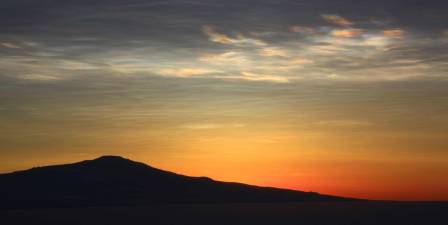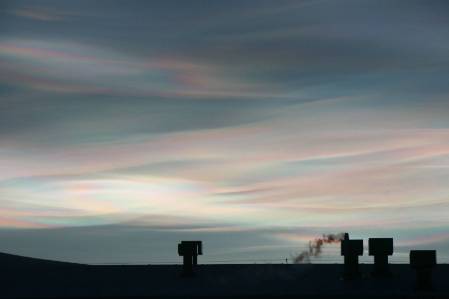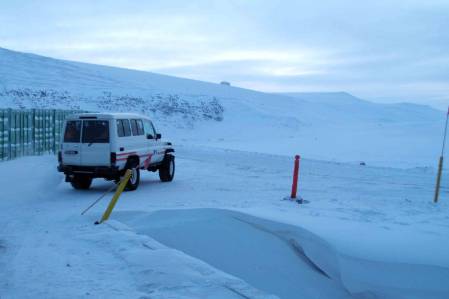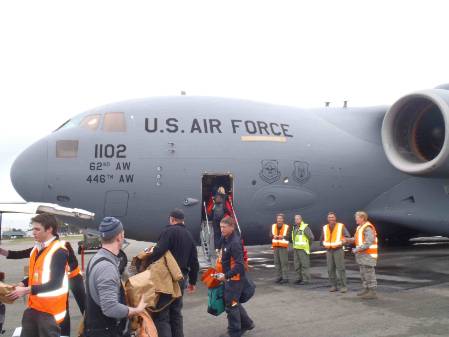Posted by Cricket
Date: 1 Sept 2010
Sunrise: 9:36am
Sunset: 16:15pm
Temperature: -34C
Wind Speed: 10 knots
Temp with wind chill: -53C
The word “nacreous” stems from the Latin “nacre,” meaning mother of pearl. Nacreous clouds are thin and transparent with a wave-like form, and were so named for their dazzling iridescent colors. They appear most prominently at dawn and dusk, and have been an almost daily feature during the last couple weeks.
Nacreous clouds during sunrise © Antarctica New Zealand/Steven
In the late mornings they can be mixtures of rainbow colors, and by late afternoon, can change to waves of greens, blues and grays.
Steven, our Scott Base science technician, explained that nacreous clouds are polar stratospheric clouds that only form in very cold polar regions and below –80C. They exist well above our atmosphere at heights of 15-25km in the stratosphere, and being so high up, they appear stationary. They gain their colors by reflecting sunlight coming from below the horizon, and so, are a skyline feature unique to this time of year. They are a reminder of larger forces at play, and are associated with the chemical reactions that cause ozone depletion.
Nacreous clouds during the afternoon © AHT/Cricket
To those wintering over in Antarctica, nacreous clouds must seem like fireworks after a 4-month-long term of darkness. Seeing them does feel like a celebration, and their presence fosters joy and conversation. Summer is coming quickly here and every day we have longer periods of daylight – a stark contrast to the almost constant darkness that we encountered upon our arrival several weeks ago. As the sun reaches higher in the sky, our time for sighting nacreous clouds draws to a close. Their appearance has been the best welcome to this fantastic landscape.














